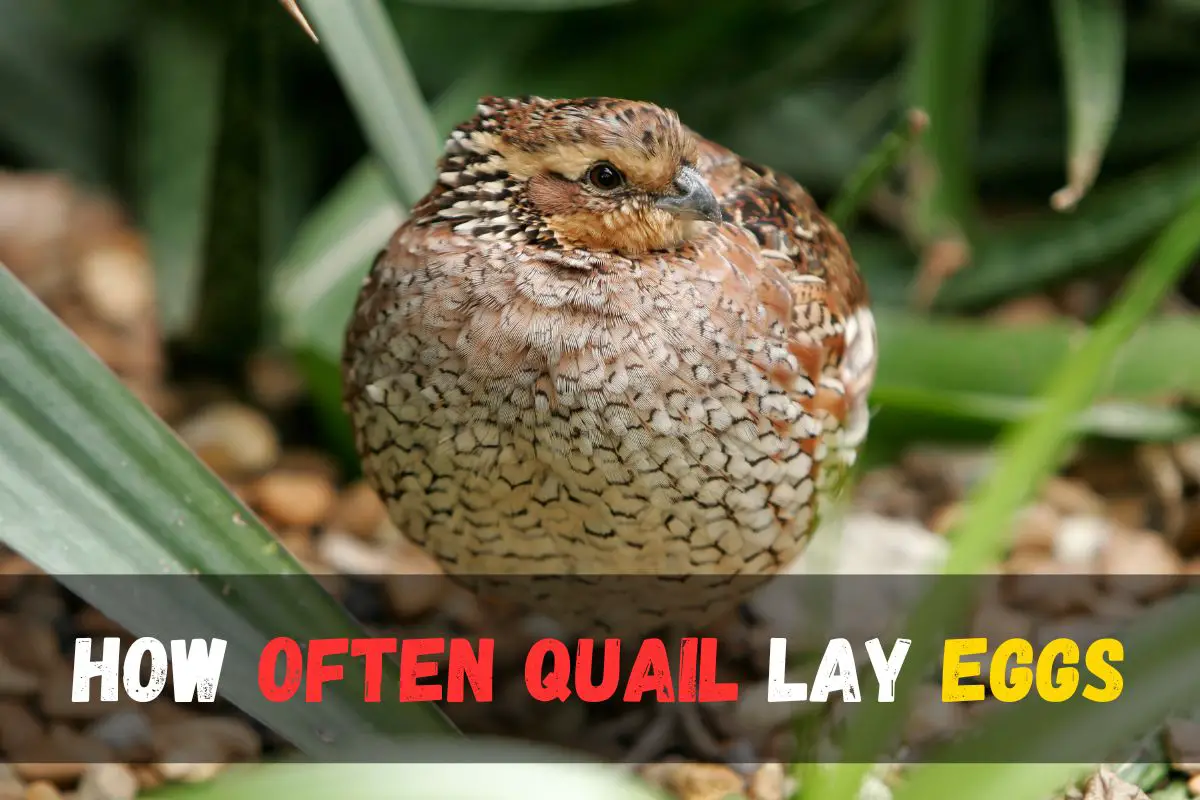Many people often ask and wonder about the frequency of quail laying eggs. It’s a common curiosity to know how often these small birds contribute to the production of eggs. Well, the answer lies in the fascinating world of quail farming! These little creatures, particularly the Coturnix or jumbo brown quail, have their unique patterns of laying eggs, and understanding them can add a delightful touch to your backyard farm. So, let’s explore the intriguing question: How often do quail lay eggs?
Can Quail Eat Chicken Feed?
How often do quail lay eggs?
Quails, particularly Coturnix or jumbo brown quail, are known for their prolific egg-laying capabilities. These birds typically start laying eggs between 6 and 8 weeks of age and reach their full potential by 10 weeks. Unlike some domestic chicken breeds, quails lay eggs consistently all year round, provided they are in the right conditions. The egg production usually occurs in the afternoon.
Quail eggs, smaller than chicken eggs with a distinctive speckled shell, are not only tasty but also offer a rich source of nutrition. They are often considered a rare specialty and are even used in fine-dining dishes. Quails, such as the coturnix quail, are active birds that roam about, feeding on insects and worms throughout the day.
It’s interesting to note that quails can lay up to 300 eggs annually, and they initiate the egg-laying process early in life. Unlike hens, quails lay their eggs right under the protective claustrum of the hen, ensuring both safety and a constant food supply for the eggs.
Do Quail Mate for Life?
Suggestions for Encouraging Quail Egg Production

Choose a Secure Housing
When considering how to encourage quails to lay eggs, selecting the right housing is crucial. There’s a wide range of options available, such as cages, pens, chicken coops, rabbit hutches, and aviaries. If you’re on a budget, rabbit hutches can be a practical choice, or you can opt for a DIY approach for a personalized quail cage.

The primary focus should be on ensuring the security of your laying quails. To achieve this, it’s essential to prevent predators from entering and quails from escaping. Make sure the housing has a roof, and consider adding a catch pan or barrier beneath the wire base in raised cages to thwart predators from reaching the quails from below.
For cages made entirely of wire, enhance the environment by adding logs, plywood, or objects the quails can step on. This not only keeps them entertained but also protects their feet, as standing directly on the wire for extended periods can be harmful.
Make Sure They Have Enough Floor Space
To ensure optimal egg production from quails, it’s crucial to prioritize their living conditions. Each quail should have a minimum of 1 square foot or 0.0093 square meters of floor space. Inadequate space can lead to feelings of confinement and stress among quail birds, directly impacting their ability to lay eggs.

Quails, like any creature, thrive in environments that allow them to express their natural behaviors without unnecessary stress. If these birds feel cramped, their egg production may be adversely affected. To address this concern and maximize egg laying, it’s essential to focus on providing ample floor space for your quails.
Creating a spacious and comfortable living area for your quails involves ensuring that they have enough room to move around freely. This not only meets their physical needs but also promotes a stress-free environment, positively influencing their egg-laying behavior.
Place hay or straw inside the quail’s enclosure
Ensuring optimal conditions for quails to lay eggs involves understanding their nesting behaviors and providing suitable environments. Quails exhibit diverse nesting preferences, with some choosing ground nesting over building nests, and others preferring the security of a nest. To cater to these varied needs, it is advisable to introduce hay or straw into their cages.

By incorporating these natural materials into the quail’s living space, you empower them to create their nests, thus mimicking their natural tendencies. This promotes a stress-free environment that encourages egg-laying.
To implement this, place a layer of hay or straw within the quail’s cage. This simple addition allows quails to engage in their preferred nesting behavior comfortably. Those inclined to lay on the ground can do so, while others desiring a nest have the materials to build one.
By understanding and respecting the individual preferences of quails, you create an environment conducive to egg-laying. This approach not only supports their instincts but also enhances the likelihood of a successful egg-laying process.
Avoid Disturbing Your Laying Quails
It’s crucial to minimize disruptions in their environment. Cleaning the cage every 1 to 2 weeks is a key practice as disruptions can hinder the laying process. Maintaining a clean space ensures your laying quails can perform at their best, and it significantly reduces the chance of unintentionally destroying their nests.
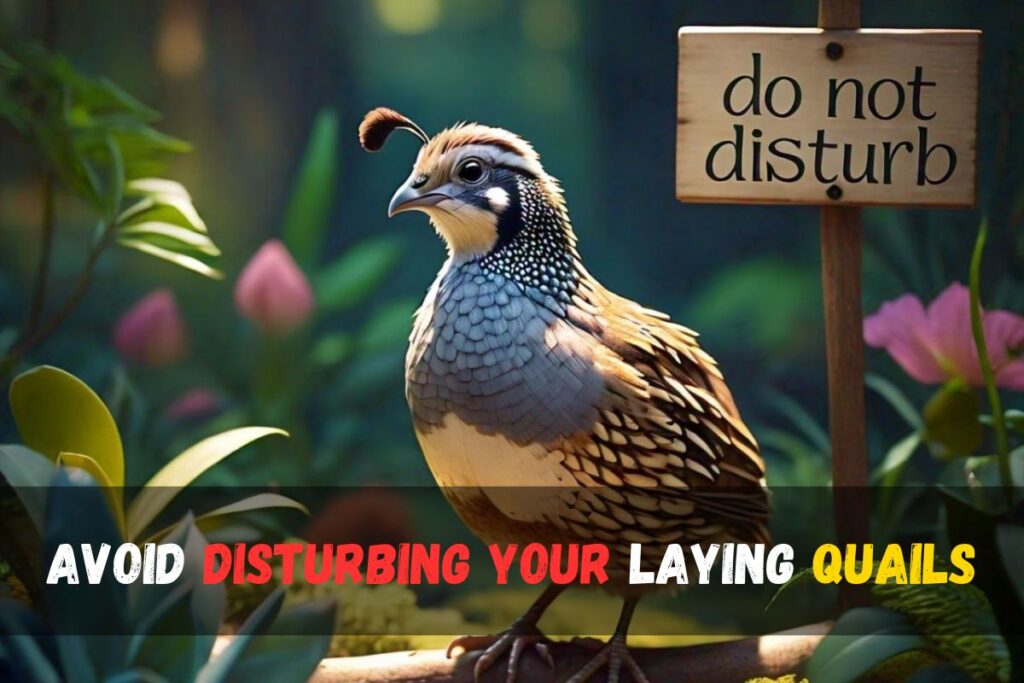
In addition to a clean environment, providing daily access to fresh food and water is essential. These are integral components of their daily routine. Quails, much like any other living beings, require a consistent and reliable source of nutrition and hydration. By incorporating these practices into your care routine, you create an environment that supports their well-being and encourages the laying of eggs.
Remember, establishing a routine is fundamental. Disturbing your quails as little as possible will lead to a stress-free environment, promoting healthy laying habits. By adhering to these tips, you’re not only optimizing their laying performance but also fostering an environment that contributes to the overall well-being of your quails.
Place them in a tranquil setting.
Quails are sensitive to loud noises and disturbances, which can significantly impact their laying performance. Therefore, it is recommended to keep them in a peaceful location, away from potential sources of disruption.
Predators, such as cats and dogs, can easily frighten quails, affecting their ability to lay eggs comfortably. To address this, it is best to keep your quails separated from these potential threats.
Feed Them With The Right Quail Food
it is crucial to pay attention to the food you provide them. The right quail feed and a well-balanced diet play a pivotal role in maximizing their egg-laying capabilities. By meeting their basic nutrient requirements and supporting their growth, you can enhance the overall productivity of your quail flock.
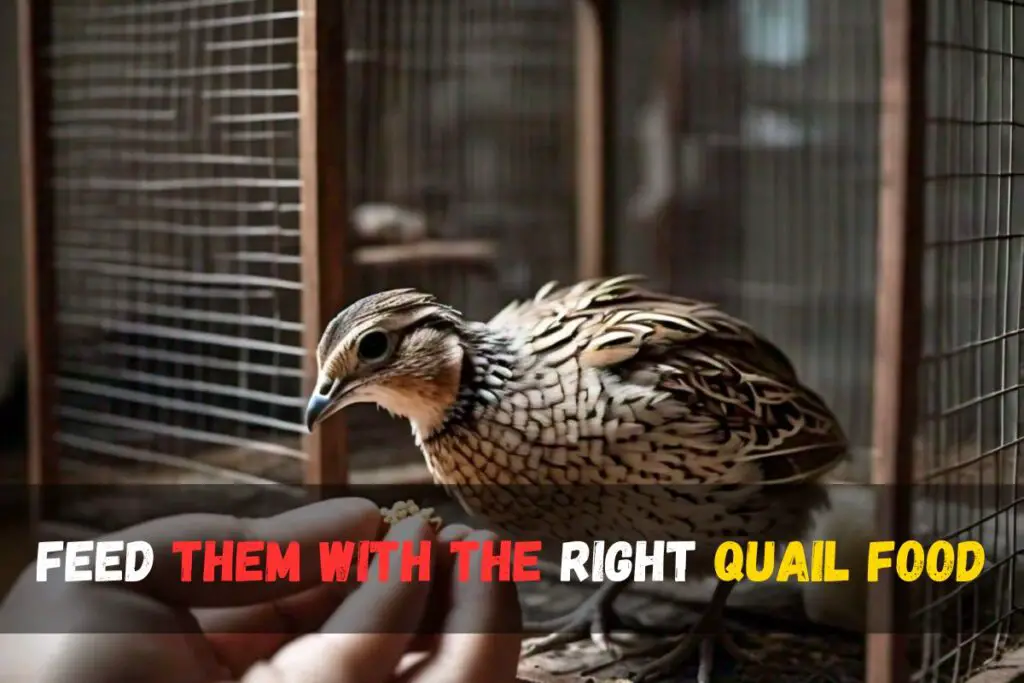
Here are some expert Suggestions for Encouraging Quail Egg Production:
Developer diet
Ensuring optimal egg production in quails involves a strategic approach to their diet. From 6 to 20 weeks, quails require a developer diet rich in at least 18% protein and 0.5% phosphorus. This specific blend not only meets their basic nutrient needs but also promotes robust growth and thicker eggshells.
Can Quail Live With Chickens?
Layer diet
As quails mature beyond 20 weeks, transitioning to a layer diet becomes essential. This diet should contain a minimum of 19% protein and 0.65% phosphorus to sustain the increased demands of egg-laying. This dietary adjustment aligns with the quails’ evolving nutritional requirements.
What To Feed Baby Quail?
Additional calcium supplement
In cases of low egg production, a supplemental boost is necessary. Introducing additional calcium through sources like limestone, crushed oyster shells, or a calcium premix proves beneficial. This supplementation not only addresses the current production concerns but also contributes to the production of high-quality eggs.
Ensure They Meet the Daylight requirements
Laying quails thrive when exposed to 14 to 16 hours of sunlight per day. Their laying mechanism can be negatively impacted if the duration of light falls below 12 hours, which often occurs during the winter season due to lower sunlight hours.
To overcome this challenge, a simple yet effective trick is to strategically position the quail cage in a sunny area. Alternatively, during the winter months, artificial lighting can be placed above their cage to supplement the natural sunlight and encourage the quails to lay eggs. However, it’s essential to strike a balance and not exceed 16 hours of light, as these birds also need adequate time for sleep.
By fulfilling the daylight requirements, you can significantly enhance egg production. As daylight hours increase, you can look forward to observing improved laying behavior from your quails. Keep in mind that providing the right amount of light is a key factor in ensuring the well-being and productivity of these birds.
Requirements for Quails to Lay Eggs: Breeding, Age, and Sex Guidelines
Wait for them to reach full maturity
Quail, particularly female ones, exhibit varying egg-laying patterns influenced by factors such as breed, age, and maturity. Understanding these elements is crucial for optimal egg production.
Coturnix quails, for instance, reach sexual maturity as early as six weeks, with the average being nine weeks. If your quail isn’t laying eggs, exercise patience and wait until they reach full maturity. This ensures that they are physically ready for consistent egg production. The timing differs among breeds, and Coturnix quails may start laying earlier than Bobwhite quails.
Speaking of Bobwhite quails, they commence laying eggs around 18 weeks of age, but it’s essential to note that consistent egg production may not occur until they reach approximately 22 weeks old. This highlights the importance of waiting for the quails to mature fully before expecting a regular supply of eggs.
Allow the newly arrived quails to acclimate for a period of 2 to 6 weeks.
When quails are introduced to a new flock or surroundings, it can be a stressful experience for them. To alleviate this stress, it is essential to allow them time to get used to the new environment. Typically, quails may take anywhere from two to six weeks to settle in before they start laying eggs.
The duration for quails to commence egg-laying may vary, with some individuals beginning this process even before the two-week mark. However, patience is key, as others may take the entire specified timespan to reach full maturity and start laying eggs.
Eliminate the males if you desire edible eggs.
Female quails, in particular, don’t require the presence of males for the egg-laying process. In fact, without the involvement of males, the eggs laid are unfertilized, making them suitable for consumption.
Get the Right Male-to-Female Ratio When Breeding Quails
When keeping quails in individual cages, it’s essential to maintain the ideal ratio of one male to three females. This ensures good fertility and reduces the likelihood of fighting among the quails
When Do Quail Start Laying Eggs
Quail, particularly Coturnix quails, typically commence laying eggs when they attain full maturity, which is usually around 6 to 8 weeks of age. The average onset is nine weeks or 63 days. However, variations exist, and some may be late bloomers. If you’re dealing with different quail breeds, like Bobwhite quails, they initiate egg laying around their 18th week, but consistent egg production occurs between 22 to 26 weeks old. King quails, on the other hand, start laying eggs at 12 weeks old, while Mountain quails take about six months before producing eggs.
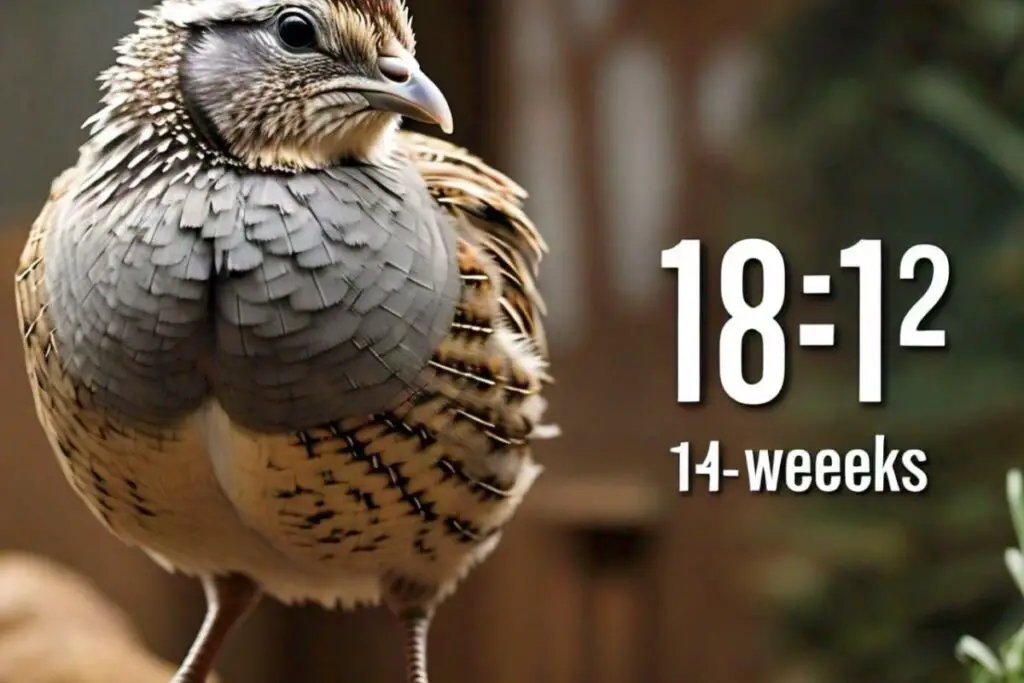
It’s crucial to consider external factors affecting egg laying. Stressors such as overcrowding, predator attacks, or a location change can influence the timing of egg-laying and may even reduce overall egg production. Therefore, understanding the specific characteristics of each quail breed and addressing potential stressors are key factors in promoting optimal egg-laying behavior.
Why Are My Quails Not Laying Eggs?
Here are potential explanations for why your quails may not be laying eggs, even though they are in their first year of productivity.
Change in Feed or Low Protein Percentage
Quails, especially laying ones, require high amounts of calcium and a protein content of at least 20% in their feed. If your current feed falls short of meeting these requirements, it could be a key reason behind your birds’ decreased egg production.
Another factor to consider is a recent change in the brand of your quails’ feed. Switching brands can affect the taste, and it usually takes about a week for quails to adapt to the new flavor. During this transition period, a decrease in egg-laying activity is not uncommon.
Stress Caused by Travel, Predators, or Changes
Quails, like any birds, can experience stress, particularly when subjected to changes in their environment. Traveling or moving their cages is a common source of stress, causing them to temporarily cease laying eggs. Fortunately, this disruption usually lasts only about a week, and their egg-laying should return to normal.
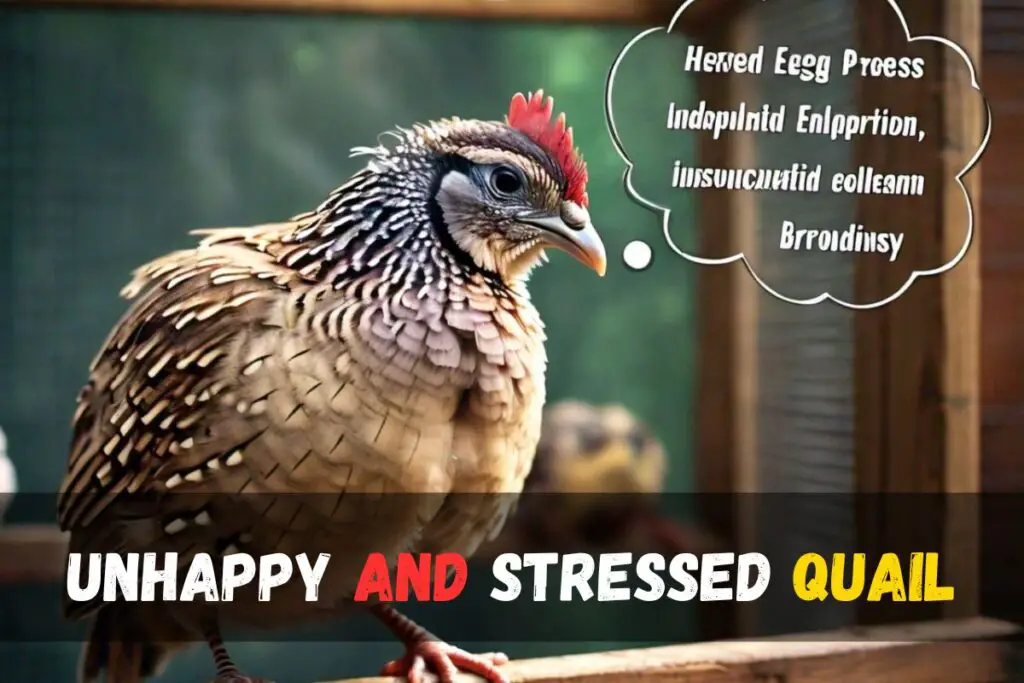
However, stressors extend beyond mere movement. Extreme temperatures, both hot and cold, pose additional challenges for quails. Predator attacks from raccoons, dogs, cats, and other pets can be detrimental to their well-being and egg-laying productivity. To address these concerns, poultry keepers must take proactive measures.
To mitigate stress caused by predators, one should focus on fortifying the quail cages. This involves raising the cages off the ground to reduce accessibility and employing protective measures such as wires. By doing so, you create a secure environment that shields your quails from potential threats, allowing them to lay eggs undisturbed.
Reduced Daylight Hours
In winter, the natural decrease in daylight hours can have a significant impact on quail egg production. The diminishing daylight triggers a response in quails, reminiscent of their behavior in the wild. During this period, quails may refrain from laying eggs as a natural response to environmental changes.
Understanding this, it’s advisable to take measures to counteract the reduced daylight effect. One effective recommendation is to provide artificial light to simulate longer days. This additional light helps to mimic the conditions that encourage quails to lay eggs. Therefore, if you’re wondering why your quails are not laying eggs during reduced daylight hours, the solution lies in offering artificial light to maintain optimal conditions for their reproductive cycle. This proactive approach ensures a steady egg-laying pattern and contributes to the overall well-being of your quail flock.
Remember, it’s crucial to create an environment that aligns with the quails’ instincts, and providing artificial light is a humane and practical way to address the impact of reduced daylight hours on their egg-laying behavior.
Quail Diseases
Diseases such as Coryza, similar to the common cold, and Ulcerative Enteritis can profoundly impact the productivity of your quail birds. If your quails are suffering from any of these ailments, swift action is crucial.
Consulting a vet becomes imperative in such situations. Prompt diagnosis and appropriate treatment can significantly improve the chances of restoring your quails’ health and, consequently, their egg-laying capabilities. It’s essential to address these health concerns swiftly to ensure the overall well-being of your quail flock.
In addition to diseases, environmental factors, nutrition, and stress can also influence egg production in quails. Therefore, a holistic approach, considering both health and environmental aspects, is vital. Regular veterinary check-ups, maintaining a conducive environment, and providing a balanced diet are key elements in promoting optimal egg-laying behavior in quails.
Where Do Quail Lay Their Eggs
Quail, being resourceful birds, exhibit diverse nesting habits depending on their environment. In natural settings, most quail prefer laying their eggs on the ground within nests crafted from grass-like hay. Particularly, those quail with the freedom to free-range show a fondness for nesting amidst grasses and shrubs.

However, the scenario changes for quail in cages, as they lack the liberty to roam freely and nest on the ground. Instead, these caged quail ingeniously create their nesting spaces within the confines of the cage. To facilitate this DIY nesting behavior, it becomes crucial to provide them with essential materials such as hay or straw.
Appearance of Quail Eggs
Quail eggs, with their fascinating appearance, showcase a spectrum of colors – white, brown, and even blue. These eggs, typically oval, possess shells that constitute about a quarter of the entire egg.
When comparing wild quail eggs to those of domestic hens, the former exhibit a more rough and toothy shell texture, making them seemingly harder to break than their chicken counterparts. Interestingly, in a single clutch, all three colors may be present, although they often manifest as pure white or brownish-white.
The colors of quail eggs are intricately tied to the mother bird’s diet. If the quail feasts on wild grasses, weeds, and seeds, the resulting eggs take on a pristine white hue. A diet predominantly composed of grains yields brown eggs, while a preference for plants with blue flowers or fruit imparts a distinctive blue color to the eggs.
Remarkably, the diet can even influence the egg color to be yellowish-white when quails are fed items like white bread and vegetables such as lettuce and other greens. This intriguing interplay between diet and appearance adds a layer of complexity to the allure of quail eggs.
Facts about Quail’s Eggs
- Quail eggs surpass chicken eggs in protein, minerals, and vitamins.
- Despite being smaller, quail eggs are known for their richer flavor.
- The shells of quail eggs are notably harder than those of chicken eggs.
- Preparation options include consuming quail eggs raw, cooked, or fried.
- Appreciation for quail eggs may require an acquired taste, often developed in those who grew up with them.
- The richness of quail eggs may make them a less universally enjoyed culinary choice.
FAQ’S
Will quail sit on their eggs?
Quails, like many other birds, exhibit fascinating behavior during their breeding season. Female quails, in particular, play a crucial role in ensuring the well-being of their eggs. They lose their feathers on a specialized area called the brood patch, located under their belly. This patch contains internal regulators that enable the transfer of body heat to the eggs, essentially acting as a natural incubator.
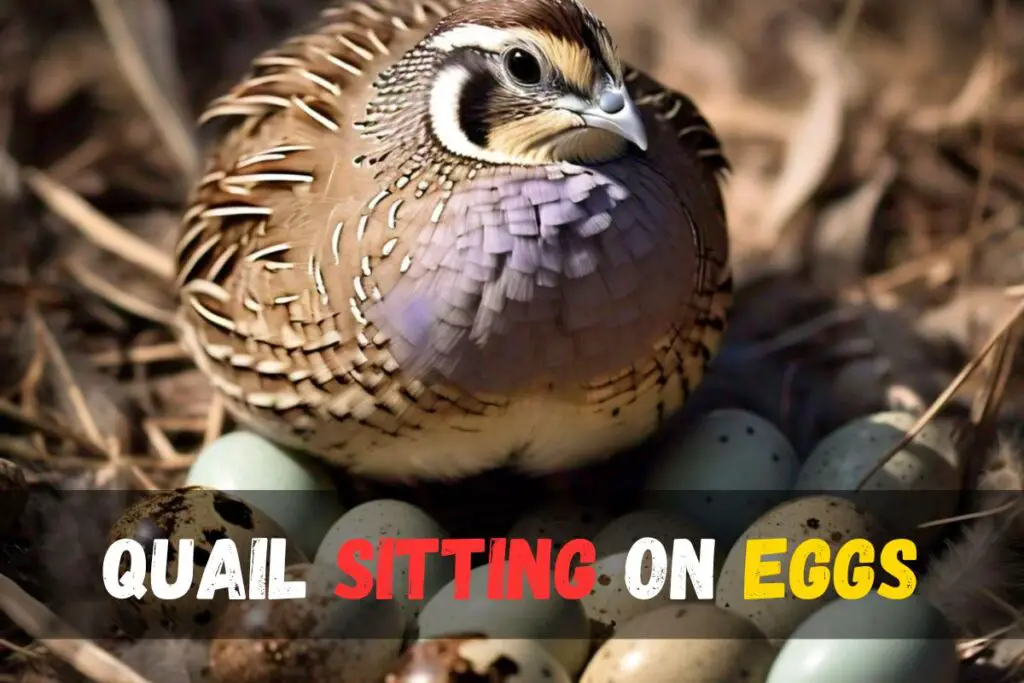
Do Quail Sit on Their Eggs?
Interestingly, quails display variations in their nesting habits. While the conventional approach involves the female quail sitting on the eggs alone, there are instances where both male and female quails take turns or sit on the eggs together. This cooperative effort emphasizes the significance of ensuring the optimal conditions for egg incubation.
So, in response to the question, “Will quail sit on their eggs?” the answer is affirmative. Female quails, driven by their innate instincts and supported by unique adaptations like the brood patch, actively engage in the incubation process to safeguard the development of their eggs. Moreover, the collaborative efforts of male and female quails further contribute to creating a conducive environment for successful egg incubation.
Do Quails Lay Eggs Without Males?
Yes, quails indeed lay eggs without the presence of males. The laying mechanism of quails is not dependent on mating, unlike some other bird species. This means that female quails in a flock can lay eggs even if there are no males around. The absence of males won’t hinder the egg-laying process for female quails.
It’s essential to note that quails will lay unfertilized eggs when there are no males present to mate with. These eggs won’t develop into chicks because they haven’t been fertilized during the mating process.
Do Quails Lay Eggs in Winter?
Quails can indeed lay eggs in winter, albeit less frequently than in other seasons. The challenge lies in meeting their light requirements during this season, as winter comes with fewer sunlight hours. To address this, it becomes almost necessary to provide supplemental lighting for your quails. The ultimate solution to fulfill their light requirements is by incorporating artificial lighting in their cage.
Artificial lighting not only compensates for the reduced sunlight but also serves as a crucial factor in encouraging female quails to continue laying eggs during the winter months. By creating an environment that mimics the natural light conditions, you ensure that your quails receive the necessary stimuli to maintain their egg-laying activity even in the colder season. Therefore, with the appropriate use of supplemental lighting, quails can lay eggs in winter, contributing to a consistent egg production cycle throughout the year.

